Site Study: Japanese knotweed control on the Ury Burn, a tributary of Cowie Water, in Aberdeenshire
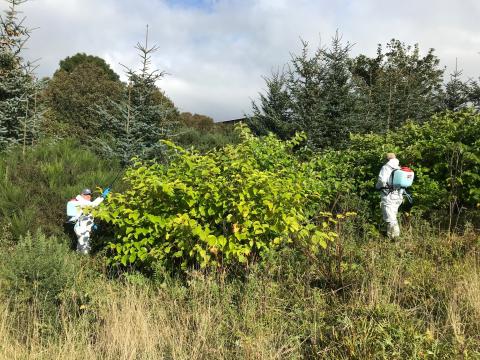
Summary
The Ury Burn is a small tributary of the River Cowie which runs through the Ury Estate by Stonehaven in Aberdeenshire.
Several large stands of Japanese knotweed were first found on both banks of the burn along a 1.5km length in 2011. Following this, the River Dee Trust has been controlling Japanese knotweed on the burn with support from the Stonehaven District Angling Association and the landowner.
Initial control in 2011 was by stem injection but the scale of the problem meant that further control was undertaken by foliar leaf spray to allow large areas of growth to be treated reasonably quickly. This work was funded initially by the Water Environment Fund managed by the Scottish Environment Protection Agency (SEPA). From 2018 control has been coordinated by the River Dee Trust as part of the Scottish Invasive Species Initiative.
Ongoing control has been required at the site due to the initial scale of infestation and the challenging nature of the site. Existing stands continue to be controlled but we are finding that ongoing treatment of small feeble stems results in poor uptake of the chemical and regrowth the following season. Since the Scottish Invasive Species Initiative became involved the abundance of Japanese knotweed present and the effort required to complete annual control has reduced.
Further control work will be undertaken by the Scottish Invasive Species Initiative via the River Dee Trust in 2022. Alongside this work discussions will take place with the landowner and angling association to seek to agree and transfer future control responsibilities to them at the end of the project. The development of a golf course within part of the Ury Estate may allow control to be continued as part of ongoing golf course management work.
1. Site description
The Ury Burn is a tributary of the Cowie Water which itself runs through the village of Stonehaven in Aberdeenshire and to the sea. The burn runs mainly through agricultural land and patches of densely wooded areas.
The control site (grid reference NO 85969 88062), owned by FM Ury Estates, is around 1.5km long with the channel width ranging from 2m to 0.5m wide along this length. Stands of Japanese knotweed are present on and adjacent to the watercourse throughout the control section. The site is shown in Map 1.
Within the Scottish Invasive Species Initiative partnership the Cowie Water catchment is covered by the River Dee Trust.
Map 1: Location of Japanese knotweed on the Ury Burn in Aberdeenshire (green polygons represent Japanese knotweed stands)
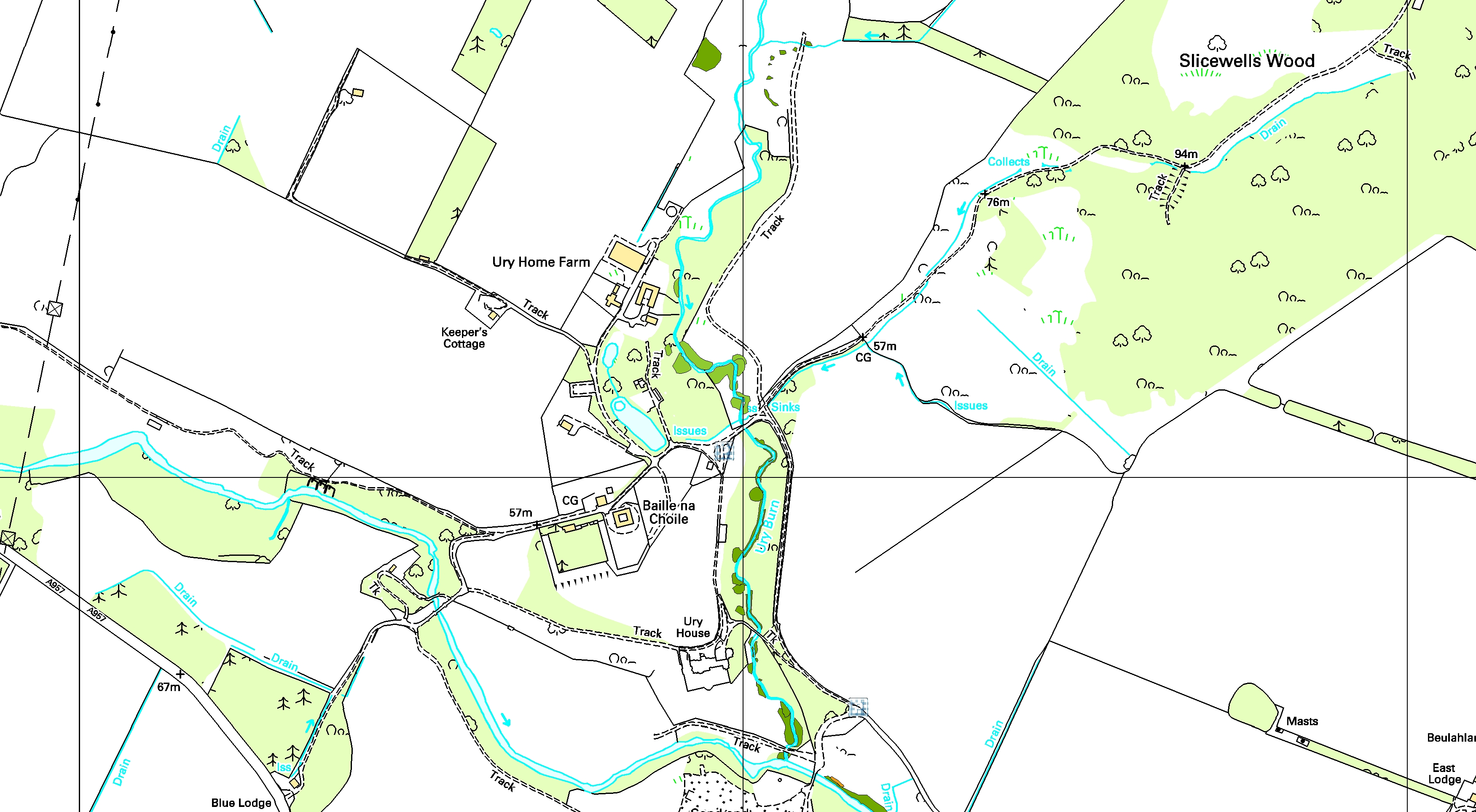
2. Background
The Japanese knotweed infestation on the Ury Burn was first identified by the River Dee Trust in 2011 and was treated initially through a programme of control funded by the Water Environment Fund which is managed by the Scottish Environment Protection Agency. Control work was maintained by the River Dee Trust with the Stonehaven District Angling Association until 2018 - at which point the Scottish Invasive Species Initiative began to support control works.
It is thought that Japanese knotweed was introduced to the Ury Burn and Cowie Water catchments from an ornamental plant collection, originally contained in the walled gardens of the estate house, due to remnant patches around the derelict estate buildings. It is assumed that this location on the Ury Estate is the origin of Japanese knotweed downstream on the Cowie Water and through the village of Stonehaven to the sea.
3. Management works
Treatment of Japanese knotweed at Ury Burn was first undertaken in 2018 by the Scottish Invasive Species Initiative – following control by the River Dee Trust and Stonehaven District Angling Club since 2011.
All stands were treated annually using glyphosate (Round-up ProVantage) applied as a foliar spray (spraying directly onto the leaves of the plant) by backpack sprayer.
Stands which had been treated in previous years had smaller and fewer stems present and these were too small to consider stem injection as a feasible method of control.
Table 1 below shows a summary of the control treatments.
Table 1 – Summary of control treatments (2018 – 2021) on Ury Burn, Aberdeenshire
| Year | Invasive Species | Control work completed by | Control work – date and control method | |||
| 2018 | Japanese knotweed | River Dee Trust staff | 22/09/18 - Foliar spray | |||
| 2019 | Japanese knotweed | River Dee Trust staff, volunteer | 15/09/19 - Foliar spray | |||
| 2020 | Japanese knotweed | River Dee Trust staff | 28/09/20 - Foliar spray | |||
| 2021 | Japanese knotweed | River Dee Trust staff, volunteer | 29/09/21 - Foliar spray |
4. Results
4.1 Invasive species abundance
Japanese knotweed abundance was recorded at three monitoring points across the site prior to control work from 2018 to 2021. Each monitoring point considered both banks of the burn and the highest abundance from either bank in each year determined the value for the monitoring site.
The abundance of invasive species was measured using the DAFOR scale* and is shown in Table 2 below.
In 2018 Japanese knotweed was ‘frequent’ or ‘abundant’ across the site. Following control, abundance reduced to ‘occasional’ or ‘rare’ in 2021.
This recorded change in abundance was also observed by changes on the ground (see Figures 1a and 1b showing within year progress (2019) and Figures 1a, 2a and 2b showing change in abundance and plant visibility from 2019 to 2021).
Table 2 - Annual Japanese knotweed abundance from surveys (2018 – 2021) on Ury Burn, Aberdeenshire
| Site name | Japanese knotweed abundance by year (DAFOR* scale) | |||
| 2018 | 2019 | 2020 | 2021 | |
| Site A | F | O | R | R |
| Site B | F | O | O | O |
| Site C | A | F | O | R |
* - DAFOR Scale of abundance – D = Dominant (50 – 100% cover), A = Abundant (30 – 50% cover), F = Frequent (15 – 30% cover), O = Occasional (5 – 15 % cover), R = Rare (<5% cover)
Figure 1a and 1b – Ury Burn Site C (2019) - Japanese knotweed before and after control
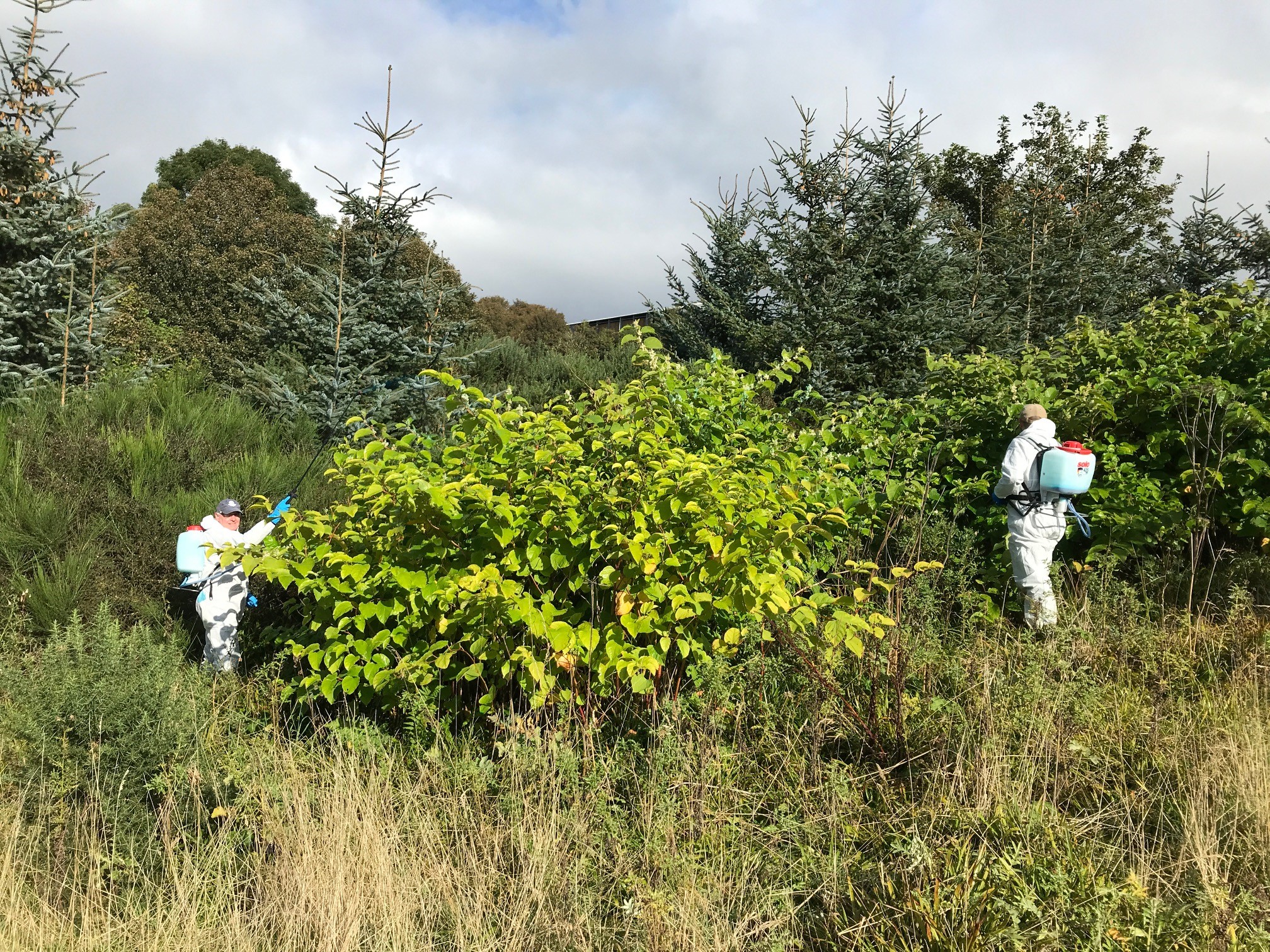 |
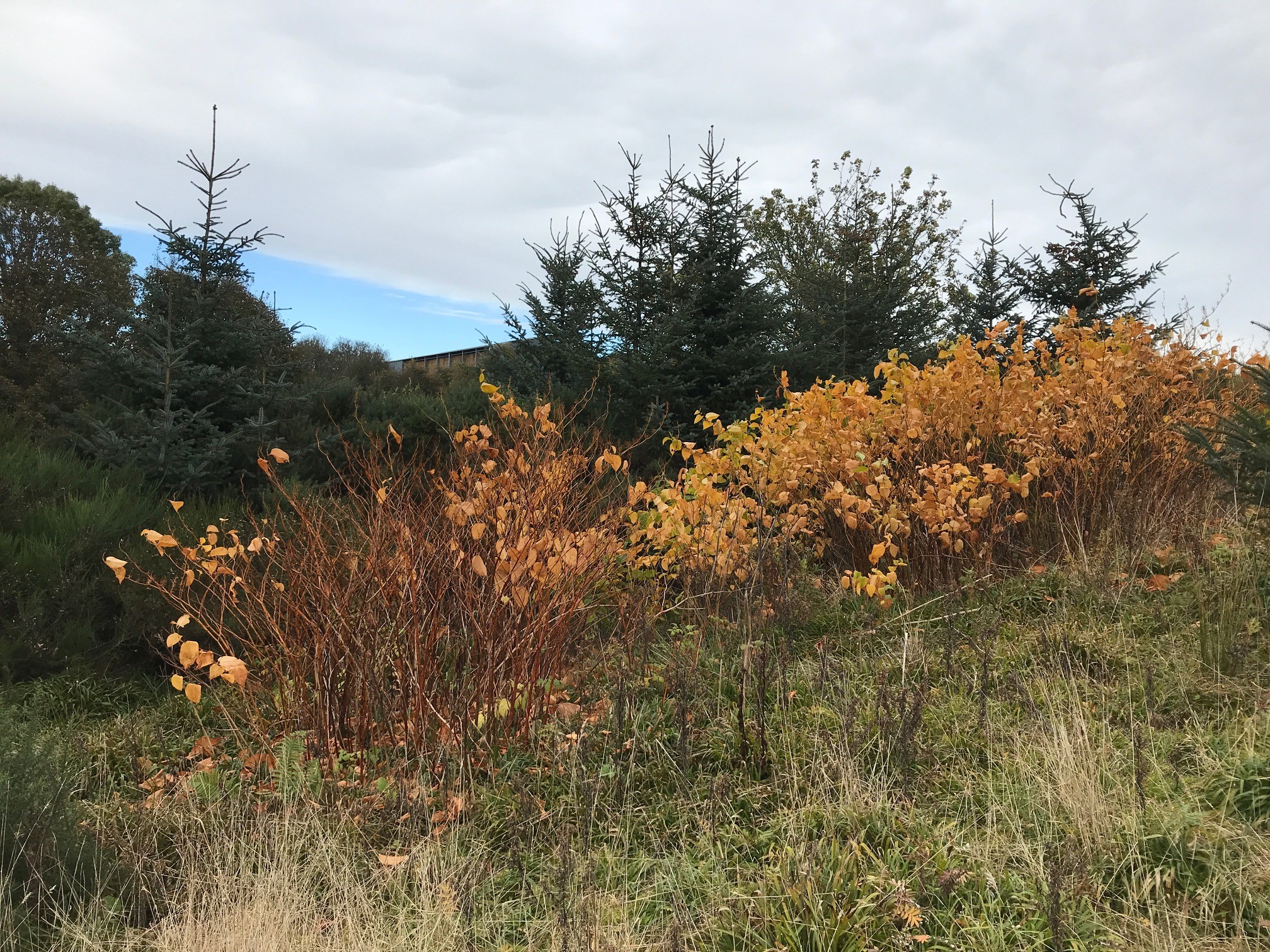 |
Figure 2a and 2b – Ury Burn Site C (2020 & 2021) – Reduced Japanese knotweed presence at treatment date
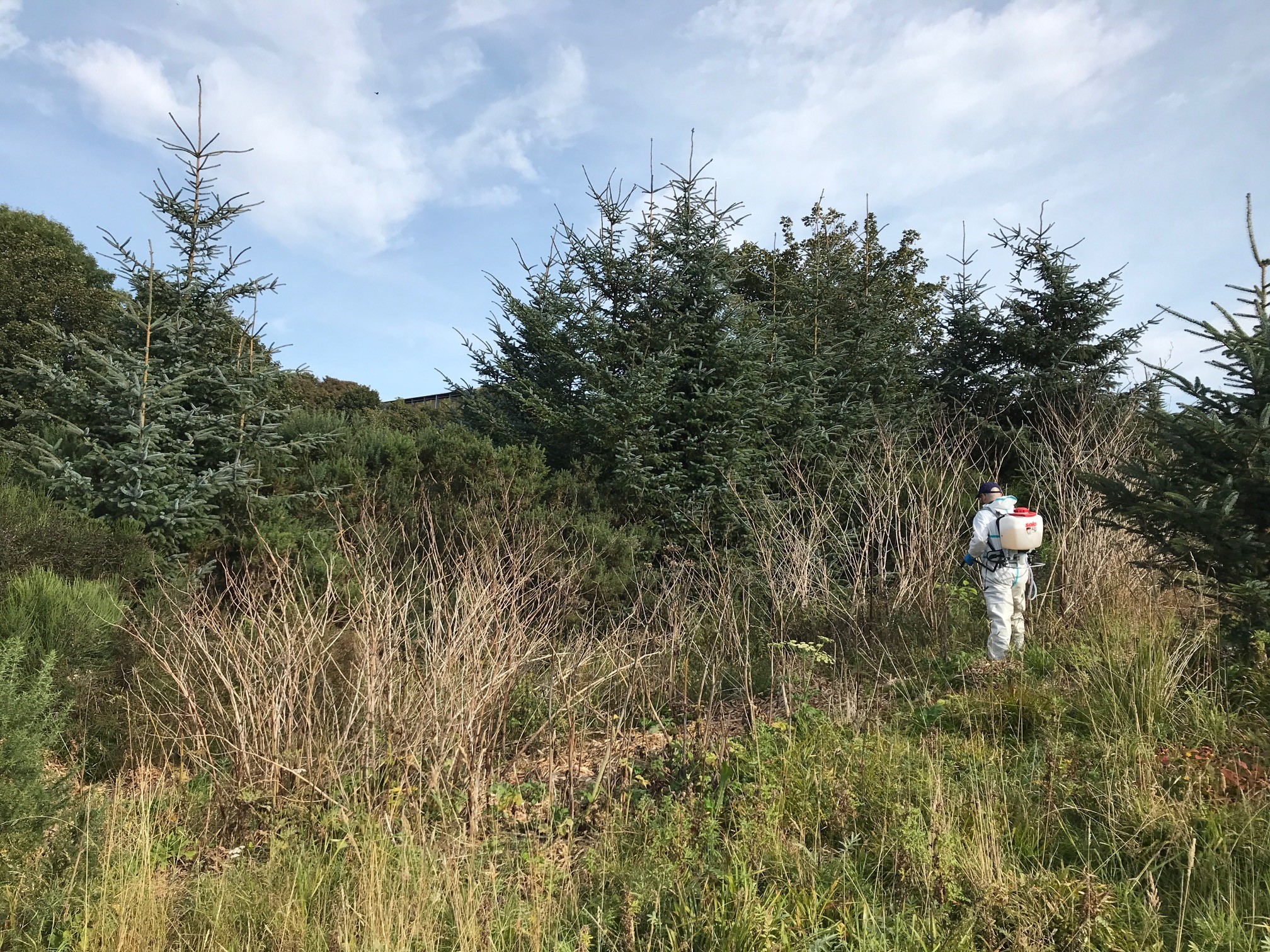 |
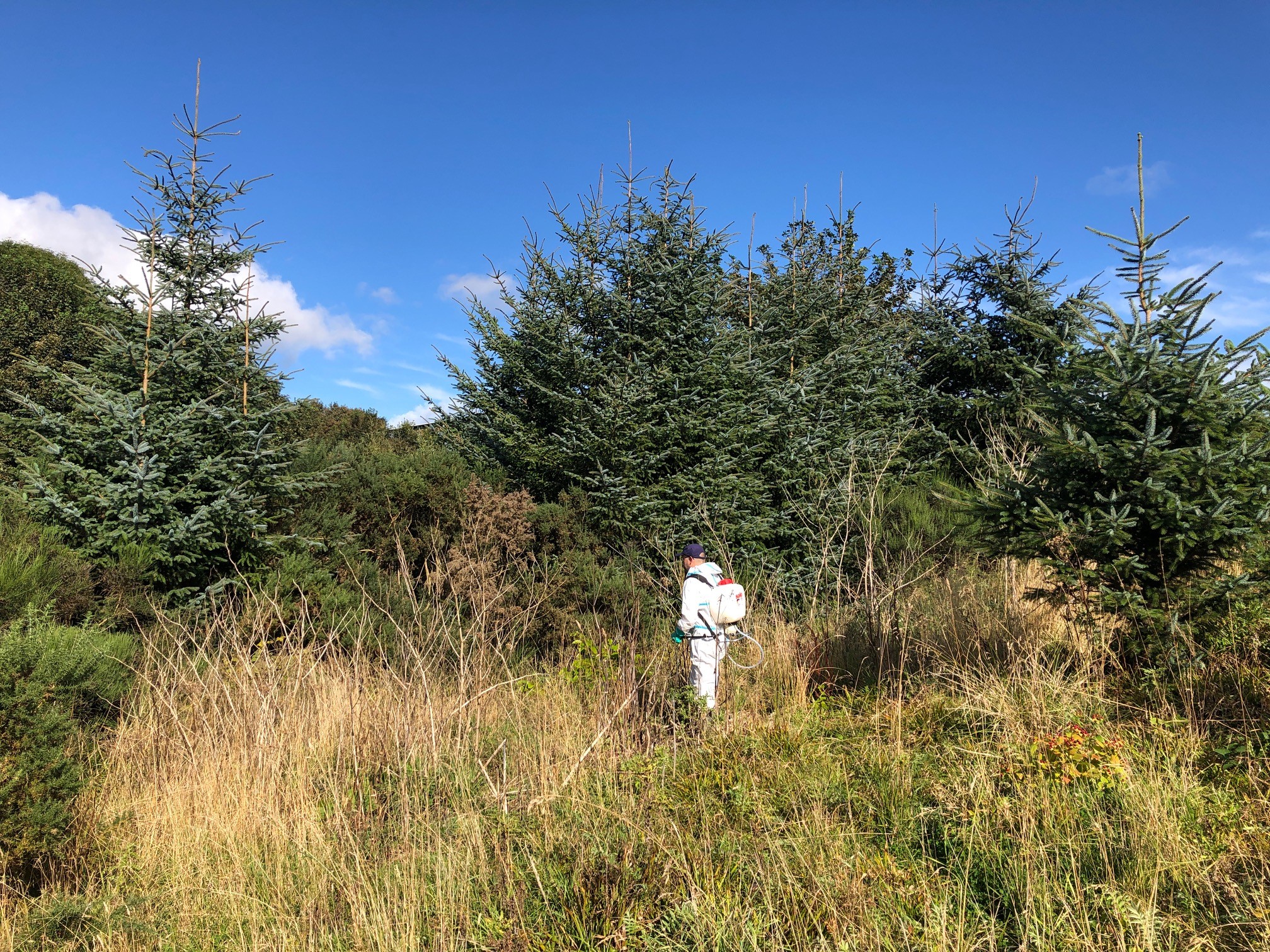 |
4.2 Chemical usage
Chemical use was recorded for the site as a whole as opposed to individual stands within the section. Glyphosate was applied as a foliar spray at a concentration of 20ml per litre.
Table 3 (below) shows the total volume of glyphosate used in each control year.
Table 3 – Volume of glyphosate used to control Japanese knotweed (2018 – 2021) on the Ury Burn, Aberdeenshire
| Site name | Glyphosate used (litres) by year | |||
| 2018 | 2019 | 2020 | 2021 | |
| Ury Burn | 3 | 1.66 | 0.6 | 0.15 |
4.3 People effort
Control work was undertaken by staff from The River Dee Trust in all years and combined with volunteer support in 2019 and 2021.
Table 4 (below) shows effort in terms of hours of control work per year at the site. Total control hours in 2019 and 2021 are higher than preceding years 2018 and 2020 due to the time contribution of volunteers working alongside staff from the River Dee Trust.
Table 4 – People hours used to control Japanese knotweed (2018 – 2021) on the Ury Burn, Aberdeenshire
| Site name | Hours of control work by year | |||
| 2018 | 2019 | 2020 | 2021 | |
| Ury Burn | 18 | 28 | 4 | 10 |
5. Conclusions and Progress Made
Work to control Japanese knotweed on the Ury Burn since 2018 has significantly reduced both the abundance of the plant in the site and the time and chemical volume required to carry out annual control.
This is demonstrated by the change in abundance of the plant (see Figures 1a, 2a and 2b) – which show the large reduction in Japanese knotweed present at monitoring point C following treatment from 2019 – and in the DAFOR scores at representative monitoring points (see Table 2) where abundance was reduced from ‘frequent’ or ‘abundant’ in 2018 to ‘rare’ or ‘occasional’ in 2020 and 2021.
Progress is also shown in terms of both the hours of work required to treat Japanese knotweed at the site and the chemical volume used in these treatments (see Tables 3 and 4). Hours and chemical volume required to deliver control reduced by 45% and 95% respectively.
Observed regrowth now takes the form of small numbers of stunted and weakened plants which would take several growing seasons to recover and start to recolonise the site again. However, we plan that these plants will be subject to ongoing annual control to continue to suppress growth and, ultimately, eradicate the plant from the site.
Ongoing control of Japanese knotweed on the Ury Burn will ensure that future re-infestation of the Cowie Water will not occur from this source.
6. Next Steps
While the density and abundance of Japanese knotweed plants at the Kellas Estates site has decreased substantially some weakened plants remain which, if left untreated, would gradually re-infest the site. Therefore, control and monitoring at the site should be continued until eradication is achieved and confirmed.
In 2022 the site will be treated again by the River Dee Trust as part of the Scottish Invasive Species Initiative. However, in parallel to this work, and given the small size of the remaining stands of Japanese knotweed, it is hoped that this work can be passed onto the estate owners and the Stonehaven District Angling Association to continue in future years.
Part of the Ury Estate is currently being transformed into a golf course. Early discussions with the developer have assured us that a programme of control will continue because of this development and the control thereafter will be achieved through ongoing golf course management.
Further information
Contact: [email protected]
